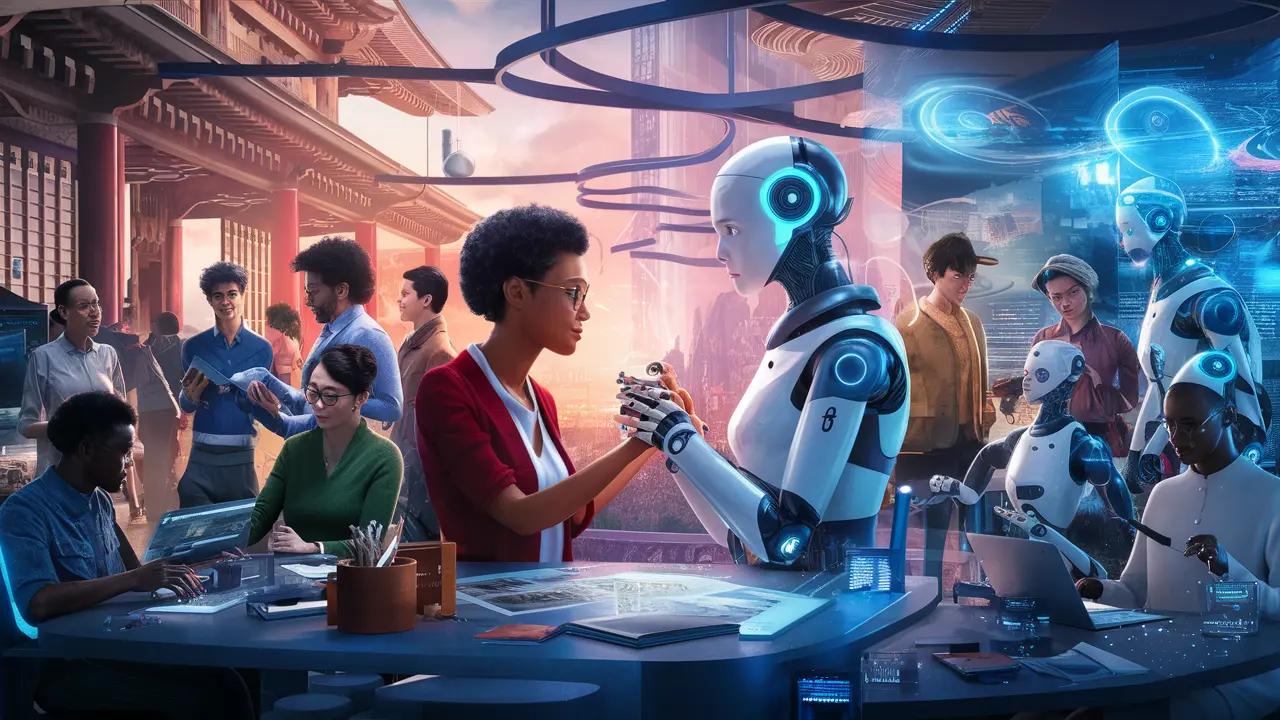May 20, 2024|5 min reading
Can Humans and AI Coexist? Exploring a Synergistic Future

The question of whether humans and AI can coexist is not just theoretical; it’s a reality we are navigating today. As AI continues to evolve and integrate into various aspects of our lives, understanding this relationship becomes crucial. This blog explores the multifaceted dynamics of human-AI coexistence, highlighting the opportunities, challenges, and the path forward for a synergistic future.
Collaboration and Enhancement
Complementary Abilities
AI systems excel at processing and analyzing large volumes of data with speed and precision. In contrast, humans bring creativity, empathy, and ethical judgment to the table. This synergy can lead to enhanced decision-making and groundbreaking innovations across various fields.
Augmentation
AI technologies are not just about replacing human effort but augmenting it. In medicine, AI assists in diagnostics and personalized treatment plans, improving patient outcomes. In education, AI provides personalized learning experiences, catering to individual student needs and fostering better educational outcomes.
Economic and Social Impacts
Job Transformation
AI is reshaping the job market, automating routine tasks while creating new roles, particularly in AI oversight, ethics, and development. The key challenge is ensuring a smooth workforce transition through robust education and training programs that equip workers with the necessary skills for new opportunities.
Social Benefits
AI holds the potential to tackle complex societal challenges. It can improve healthcare outcomes, enhance accessibility for people with disabilities, and contribute to solving pressing issues like climate change. These advancements promise significant social benefits, enhancing the quality of life for many.
Ethical and Governance Considerations
Ethical AI Use
Ensuring the ethical use of AI involves fostering fairness, privacy, and transparency. This requires ongoing dialogue among technologists, policymakers, and the public to develop frameworks that safeguard these principles and promote responsible AI deployment.
Global Governance
The development of international norms and agreements on AI use is crucial. Such measures can help manage risks, ensure benefits are widely shared, and prevent the misuse of AI technologies, promoting a safer global AI ecosystem.
Challenges and Risks
Bias and Discrimination
AI systems can perpetuate or exacerbate biases present in their training data. Vigilant efforts are necessary to ensure these systems are fair and inclusive, promoting equity in AI applications across diverse demographics.
Security Risks
AI systems are vulnerable to hacking and misuse. From creating deepfakes to deploying autonomous weapons, the potential security threats posed by AI are significant. Addressing these risks requires robust cybersecurity measures and ethical guidelines.
The Path Forward: Strategies for Coexistence
Reskilling and Upskilling
The rise of AI necessitates a focus on lifelong learning. Individuals should invest in acquiring new skills, particularly in fields less susceptible to automation, such as creative industries, healthcare, and technology. Embracing tech literacy can also enhance employability in a tech-driven job market.
Career Transition
Identifying growth industries and leveraging transferable skills can help individuals navigate job market shifts. Sectors like healthcare, renewable energy, and technology are expected to grow, offering new employment opportunities.
Entrepreneurship and Innovation
AI and technological advancements create new niches for entrepreneurship. Innovations driven by AI can lead to the creation of new businesses and consultancy opportunities, particularly for those with expertise in specific fields.
Advocacy and Support
Engaging with policymakers to support worker-protection policies, such as universal basic income and retraining subsidies, is crucial. Community support groups can also provide resources and networking opportunities during transitional periods.
Mindset and Adaptability
Cultivating an adaptive mindset is key to thriving in an AI-integrated world. Embracing change, being open to relocation or industry shifts, and maintaining financial planning strategies can help individuals manage transitions effectively.
Conclusion
The coexistence of humans and AI is not only possible but already underway. The focus now is on shaping this relationship to maximize benefits and minimize risks. Through collaboration across sectors and disciplines, we can foster a future where AI enhances human capabilities and contributes to societal well-being. Continuous assessment and adaptation will be essential in navigating the evolving landscape of human-AI coexistence, ensuring a future where both humans and AI thrive together.
Explore more

Elon Musk’s Vision: AI, Mars, and a Future of Abundance
Explore Elon Musk’s predictions on AI, Tesla’s Robotaxi plans, Starship’s Mars mission, and the role of robots in a futu...

Unlocking the Future: The Revolutionary Potential of Brain Image Reconstruction Technology
Discover how brain image reconstruction technology is pushing the boundaries of science and art by decoding thoughts int...

Can Artificial Intelligence Replace Human Intelligence?
Exploring the capabilities and limitations of AI in comparison to human intelligence.
